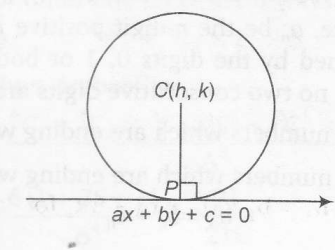Answer:
Option A
Explanation:
(i) Equation of a tangent to at (x1,y1) is
x2+y2=r2

at (x1,y1) is
xx1+yy1=r2
(ii)If ax+by+c =0 is tangent to (x-h)2+(y-k)2=r2
|cp|=r
Here tangent to $x^{2}+y^{2}=4$ at the point
$P(\sqrt{3},1)$ is $\sqrt{3} x+y=4$.............(i)
As. L is perpendicular to $\sqrt{3} x+y=4$
$\Rightarrow$ $x-\sqrt{3}y= \lambda$
which is tangnet to $(x-3)^{2}+y^{2}=1$
$\Rightarrow$ $\frac{|3-0-\lambda|}{\sqrt{1+3}}=1$
$\Rightarrow$ $|3-\lambda|=2$
$\Rightarrow$ $3-\lambda=2,-2$
$\therefore$ $\lambda=1,5$
$\Rightarrow$ $L:x- \sqrt{3} y=1, x-\sqrt{3}y=5$